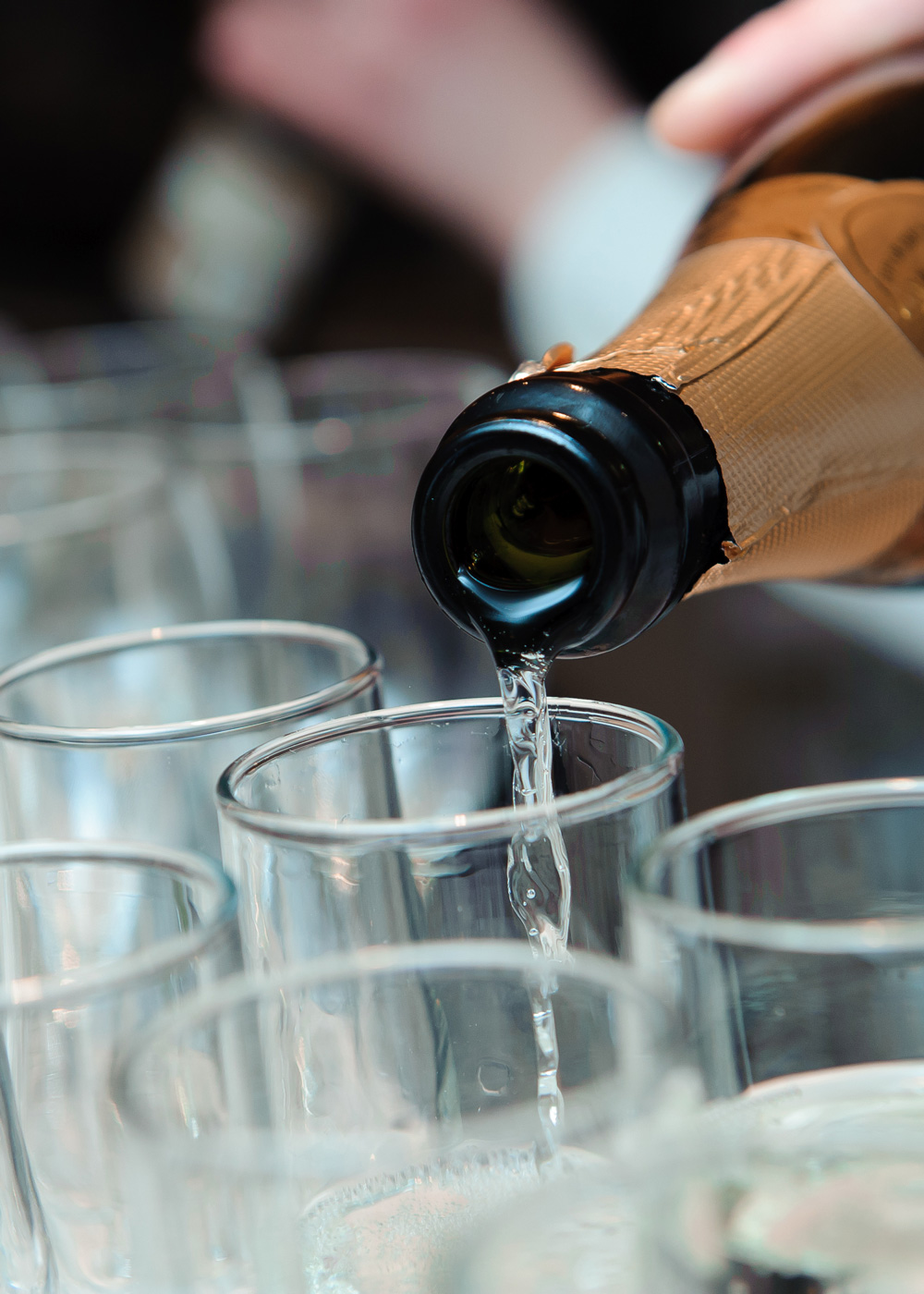The price of admission to a bottle of Champagne lies in the treacherous removal of a cork under extreme pressure. Corks expelled from a Champagne bottle move at around 25 miles per hour and can cause serious harm. Learning the proper and safe way to open a bottle can help you avoid hurting yourself or others and help you to celebrate in style.

Below are the 4 steps involved in opening a bottle of Champagne or other sparkling wine:
1. Chill the bottle and let it rest.
- Sparkling wine is more volatile when warm and when it’s been recently agitated. Letting the bottle rest for a while in the refrigerator will take care of both issues. For more tips on chilling a bottle quickly, take a look at our previous post on wine service.
2. Open the wire on the cage but don’t remove it.
- Before opening the bottle, loosen the wire cage over the cork but don’t remove it. It makes me nervous to see bottles sitting without their cage but with the cork still in the bottle. To me, they look like little time bombs ready to shoot a cork right into a light fixture. You shouldn’t remove the cage so that you can grip it and the cork together for safety, never removing your hands from the bottle.

3. Hold the bottle at an angle.
- Hold the bottle at a 45-degree angle so that the liquid in the bottle has more surface area to release its carbonation – this makes the bottle less likely to overflow with foam. Make sure to point the bottle away from yourself and others.
4. Remove the cork.
- Hold the cork still with one hand and turn the bottle back and forth with the other hand. When you feel the cork loosen, apply some pressure to keep it from shooting out of the bottle. When you hear the pressure release, you can serve the wine.
The best way to learn to open Champagne bottles is to practice, so stock up and get started!

Historical Background
Prior to the 17th century, Champagne was meant to be a still wine, but sometimes bottles would develop a fizz due to unintentional secondary fermentation. Bottles full of bubbly wine were dangerous as they could explode without warning leading Champagne to be dubbed “the devil’s wine.” The modern style of sparkling Champagne wouldn’t be possible without high quality, durable glass bottles capable of withstanding internal pressures up to 90 psi – three times higher than the average tire pressure.



